
Oh, what to buy in Peru! No vacation is complete without picking up a few local souvenirs to remember your trip. And what better way to remember than with some traditional Peruvian crafts ? Below we have compiled a list of the absolute must-have souvenirs from Peru . Whether you adore everything handmade or prefer a tasty treat, there is a Peruvian souvenir for you!
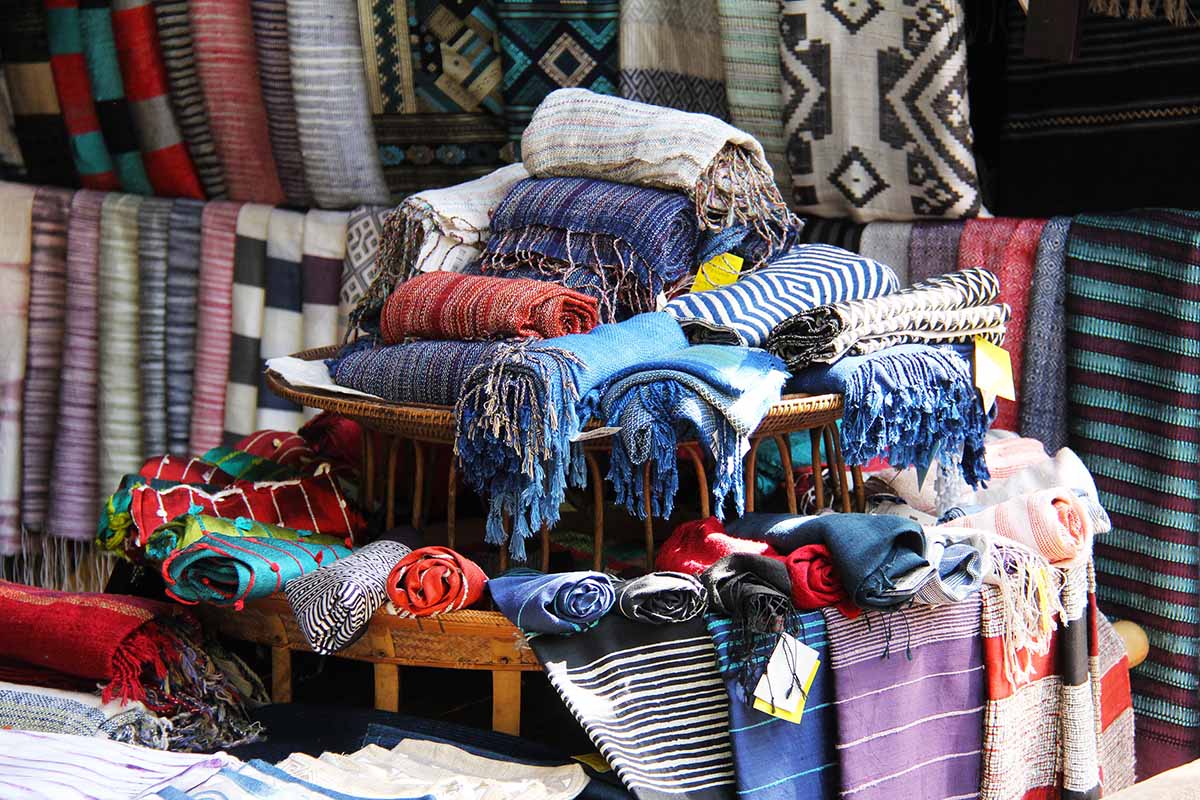
You can find alpaca scarves in a variety of styles! Photo from Pxhere , a public domain image database.
Most travelers in Peru will consider buying something made of alpaca wool as a given. After all, alpacas have been an integral part of Peruvian culture for centuries. You can find all kinds of garments and home decor to suit your style. Llama motif sweaters, super-soft baby alpaca scarves, colorful, traditional Peruvian ponchos and blankets… You name it!
But make sure you’re purchasing real alpaca and not synthetic or a blend. The best place to buy alpaca in Cusco is the Centro de Textiles Tradicionales del Cusco . A non-profit collective of 600 weavers runs this center that is both a textile museum and a shop. Some other great alpaca boutique options include Cocoliso Cusco, Etno Alpaca , and Kuna .
Cusco Tours:
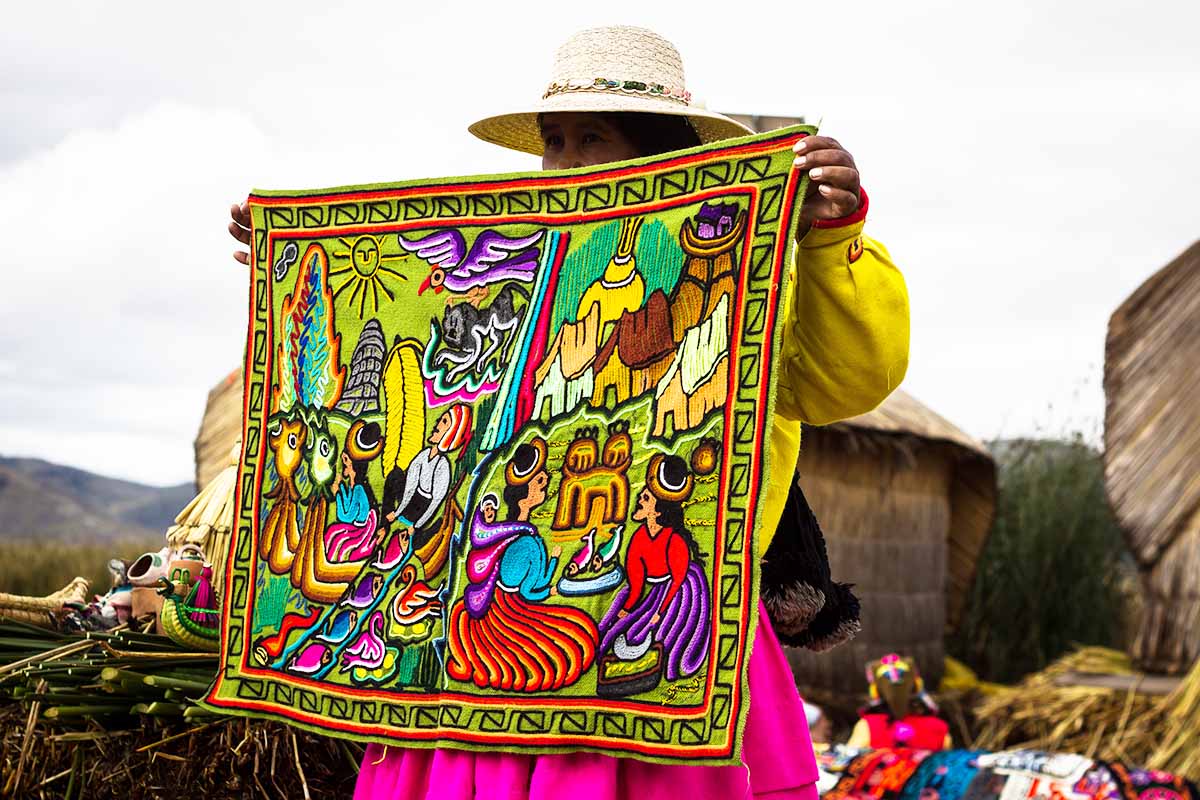
Peruvian textiles can include scenes from Andean life or meaningful geometric patterns. Photo by Daniella Beccaria .
Like alpaca products, Peru is known for its textiles. Peruvian textiles use intricate geometric patterns, as well as revered native animal motifs. Discover a variety of vivid pieces depending on your tastes and decorative needs. You’ll happen upon woven Peruvian rugs , blankets, wall hangings, tablecloths, and runners. There are even awesome textile accents on backpacks, purses, and shoes.
Pretty much all Peruvian markets sell textiles. However, the greatest variety of Peruvian textiles for sale is in the Indian Market, or “Mercado Indio,” in Lima. The best markets in Cusco are the Centro Artesanal and San Pedro Market.
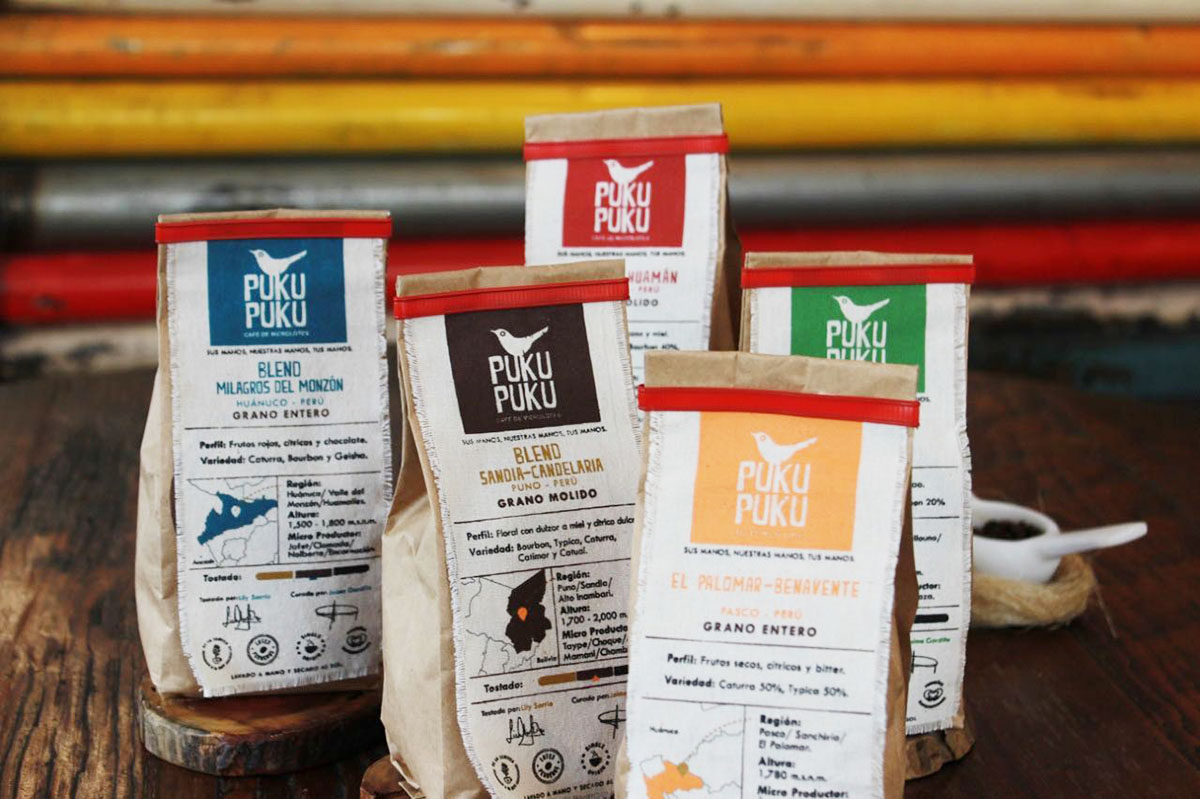
Puku Puku, a popular organic coffee brand in Lima. Photo by Puku Puku on their Facebook page .
Peru has been making it onto the international scene for its coffee . It is now the second-largest exporter of fair trade coffee after Mexico. Much of Peru’s organic coffee production is from co-ops. The farmers have small plots of land located at 3,900+ feet (1,189+ m) above sea level. With prime geography and dedication, Peruvian coffee is sure to be delicious!
Peruvian coffee is usually medium-bodied, with hints of chocolate, nuts, and sometimes citrus. When buying coffee in Peru, be sure to select 100% arabica. Also, the higher the elevation where it was grown, the better! The co-op Cecovasa, in particular, has two award-winning coffee brands: Tunki and Quechua.
For those coffee enthusiasts among us with (a lot of) cash to spare, Peru is also well known for its coati coffee . (A kilo, or about 2 lbs, of this coffee can cost $1,400)! This is a specialty dung coffee, produced with the help of an adorable critter. Coatis are native to Central and South America.
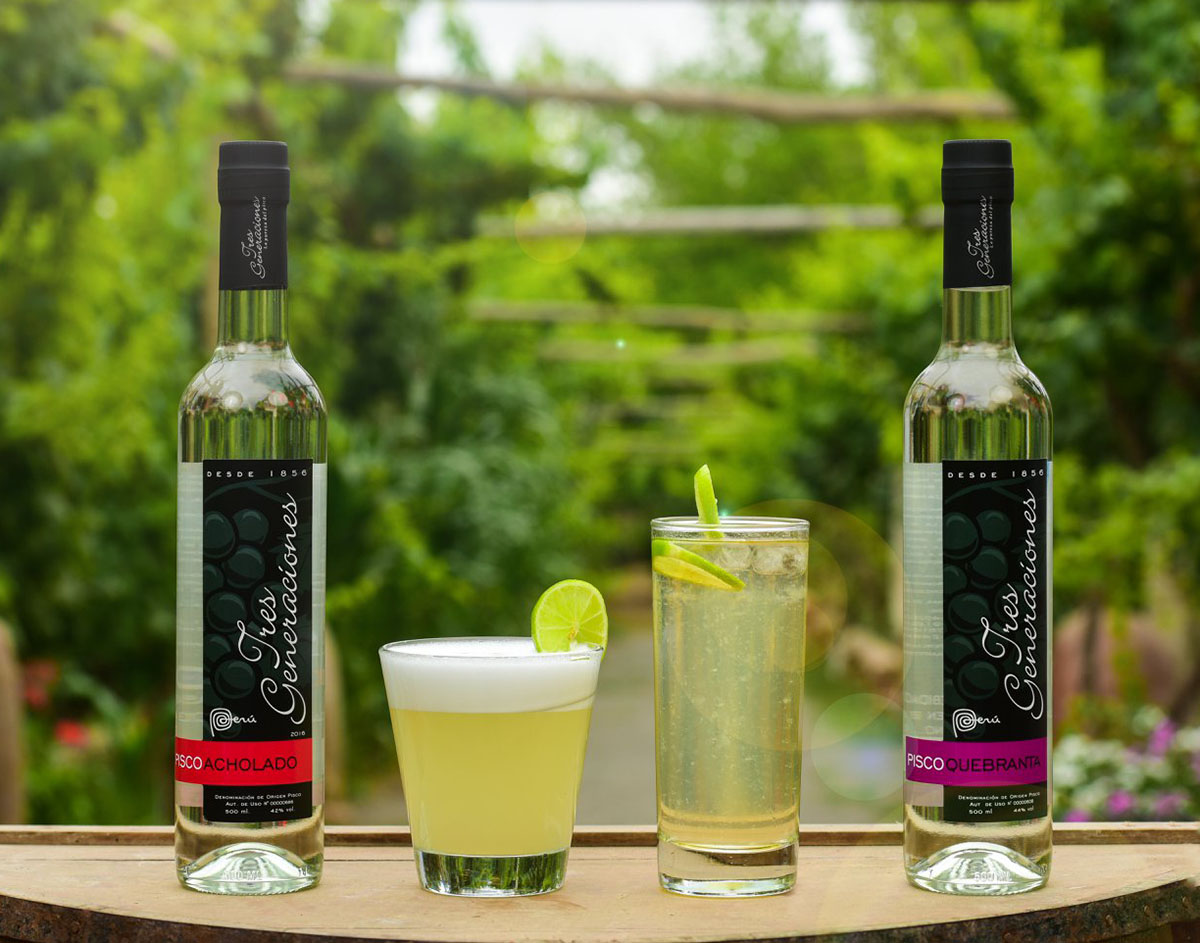
A bottle of pisco Acholado and pisco Quebranta frame Peru’s most popular cocktails: Pisco Sour and Chilcano. Photo by Tres Generaciones on their Facebook page .
Pisco is the national liquor of Peru and considered a national cultural heritage. Good pisco is the foundation of the most popular national cocktail, the Pisco Sour . This high-proof spirit is made from fermented grapes in the sunny coastal regions of Peru. The best pisco is said to come from the Ica region, several hours south of Lima.
When deciding which pisco to buy in Peru , keep in mind that there are four types of pisco:
All of these types of pisco are for different consumption. Albilla is best when paired with desserts. Quebranta is what you should buy to make Peruvian cocktails at home. If you would like to enjoy straight pisco, Italia is the best. Some of the best brands of pisco include Biondi, Pisco Portón, Tres generaciones , and Demonio de los Andes .
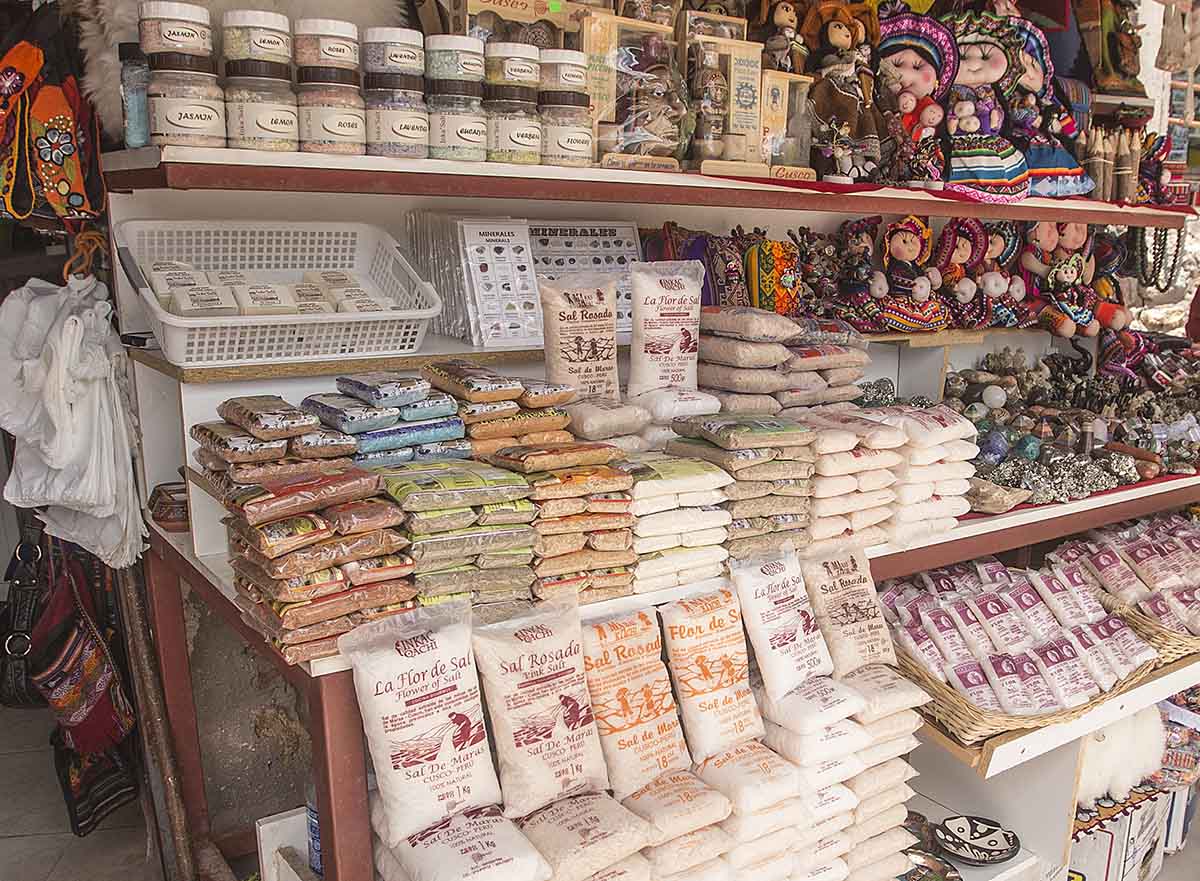
A variety of sal de Maras, or Peruvian salt. Photo by Ana Castañeda for Peru for Less.
The salt mines of Maras are a popular tourist attraction in the Sacred Valley . And for good reason. First of all, there is an incredible history behind the salt ponds. The townspeople of Maras have been producing salt in this same spot for over a thousand years. In fact, to this day, they are the owners and producers of all the salt from the ponds. Currently, there are about 4,500 wells that completely cover the mountainside.
Second, the salt itself is of great quality and rich in minerals. The townspeople harvest salt by filling the pools with salty water from a natural stream. When the water evaporates, it leaves behind layers of salt. There is a white layer used for cooking. The more expensive pink layer (sal rosada) is for extra tasty, high-end cooking. Then there is a lower brown layer used only for livestock. Depending on your budget, you can purchase white or pink salts as gifts for your aspiring chef friends!
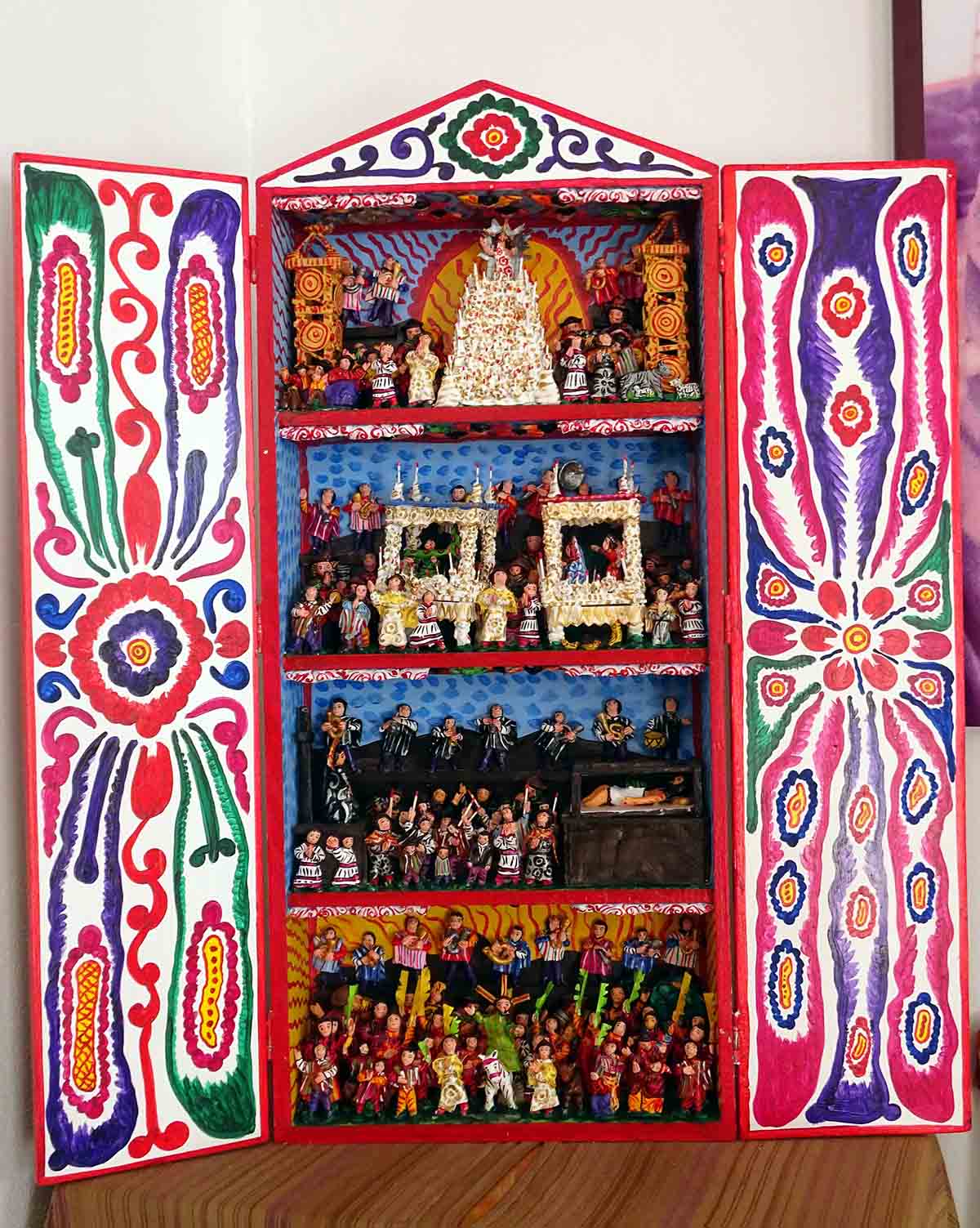
A hand-painted retablo with hand-carved figurines depicting Andean traditions. Image: “ Famous Ayacucho retablo made by quechua artist ” by Sucram Yef , used under CC BY 2.0 / Compressed from the original.
Peruvian retablos originate from the Christian Spanish tradition of portable altars. But, the altars made in Peru have a very unique style. Retablos, as we know them today, originated in the Peruvian city of Ayacucho. These colorful boxes often depict intricate religious or historical scenes. Then can also show simple scenes from everyday life in the Andes. The boxes are hand-painted with typical Ayacucho flower designs. And skilled artists carve the beautiful Peruvian figurines inside by hand.
Retablos can also range in size from that of a matchbox to displays several feet high. Of course, if you’re buying a few gifts from Peru , you might want something that fits inside your suitcase! You’ll see Peruvian retablos for sale in most markets throughout the country. But there will be more variety in Andean cities where the tradition is more prevalent.
To see the craft of retablos in a cultural context, watch the award-winning Peruvian film Retablo by Alvaro Delgado-Aparicio on Netflix .
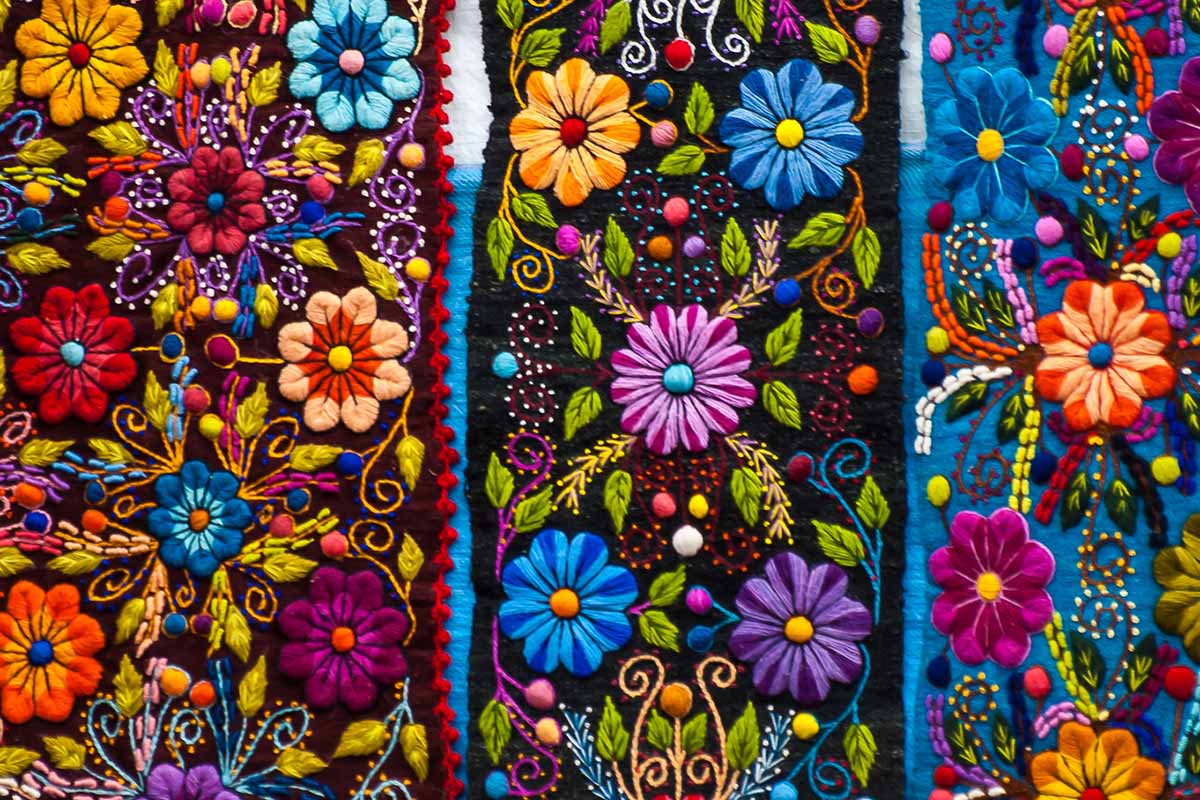
Brightly colored traditional Ayacucho embroidery. Image: “ Peru – Sacred Valley – Pisac Food and Souvenir Market ” by World Wide Gifts , used under CC BY-SA 2.0 / Cropped and compressed from the original.
Embroidery has been an integral part of the local culture of Peru for millennia. For ancient cultures, it was often used for ceremonial purposes. Today, it’s a way to connect with local identity and memory. Each region—and even village—of Peru, has a unique embroidery style. You’ll see embroidery on local women’s skirts, men’s vests, and many other traditional garments.
All markets carry hand-embroidered crafts ready to add a pop of color to your home or wardrobe. Brightly colored flowers adorn pillowcases. Jean jackets sport floral accents. You can also find handbags and keychains with various local styles of embroidery.
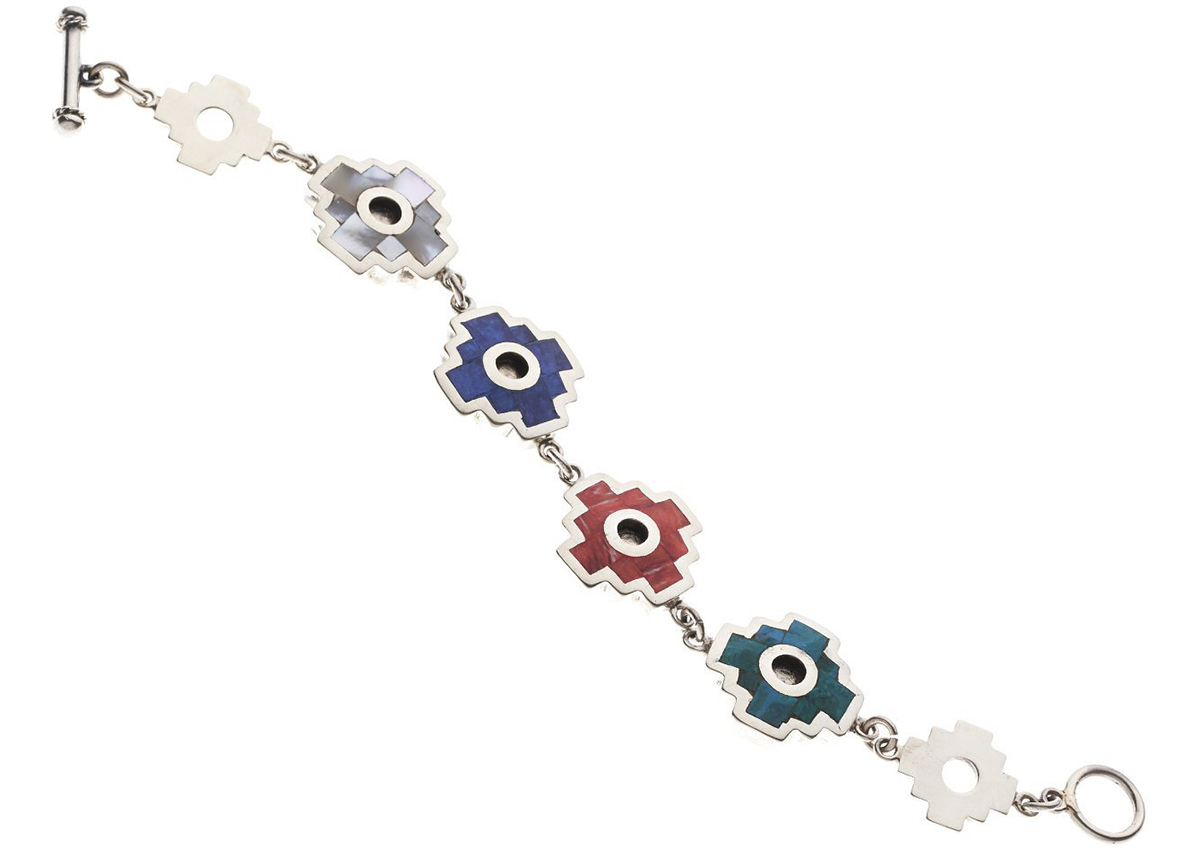
A stone inlaid chakana bracelet is just one of the many types of Inca Cross jewelry and trinkets you can find in Peru. Photo by Ilaria .
The Chakana, or Inca Cross, is a very important design in Inca culture. The three-step design represents the three levels of existence in Incan religious beliefs. There’s Hana Pacha, the upper world where gods live. Then there’s Kay Pacha, the earthly world where we exist. And lastly, there’s Ukhu or Urin Pacha, the underworld where our ancestors pass after death.
You will see the Inca Cross design throughout your travels in Peru. In Incan stonework, pottery, knit sweaters, and all over Peruvian jewelry. Inca cross pendant s are easy to find in markets. You’ll find carved stone necklaces, as well as bright colors inlaid in silver. If you’re not a jewelry person, you can also find decorative Chakana statues or as a keychain.
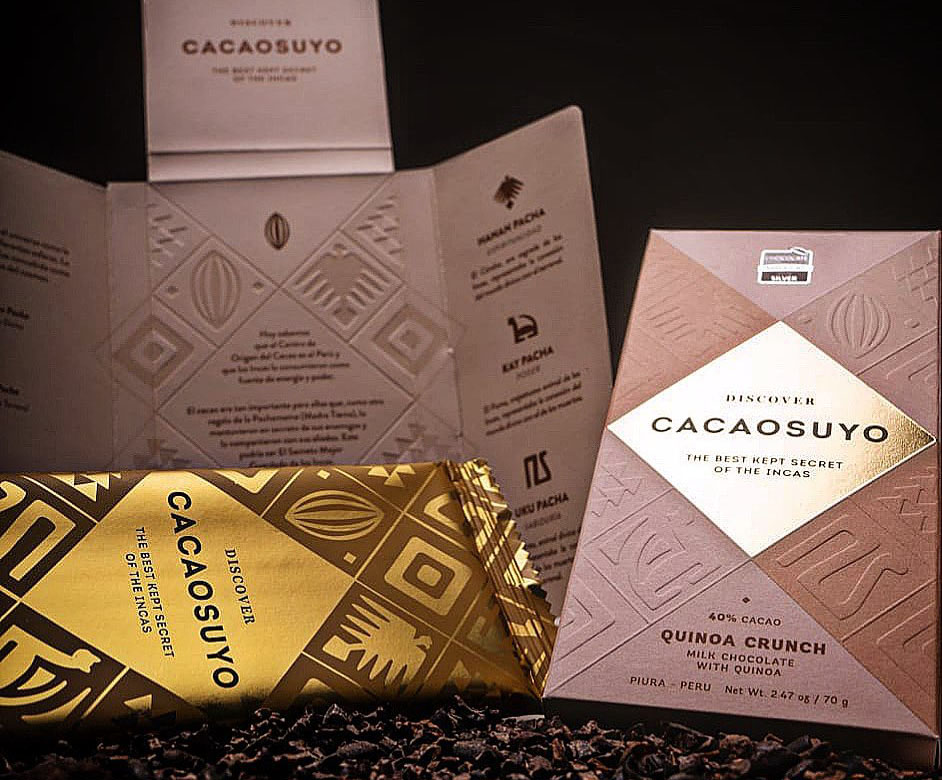
The award-winning chocolate brand Cacaosuyo. By Cacaosuyo on their Facebook page .
Move over, Switzerland! Peru is coming onto the stage as one of the best chocolate makers in the world. Peru has been a cacao producer for many, many generations, especially organic chocolate. In recent years, the country has been perfecting its bean-to-bar chocolate making technique. In 2019, Peruvian chocolate brands won several international chocolate awards . Cacaosuyo , perhaps the best chocolate in Peru , has taken home the most awards. The next best chocolate to buy in Peru is Domenico, Tribar Craft , Shattell , Nina Fine , and Bakáu . Moreover, all of these brands are organic!
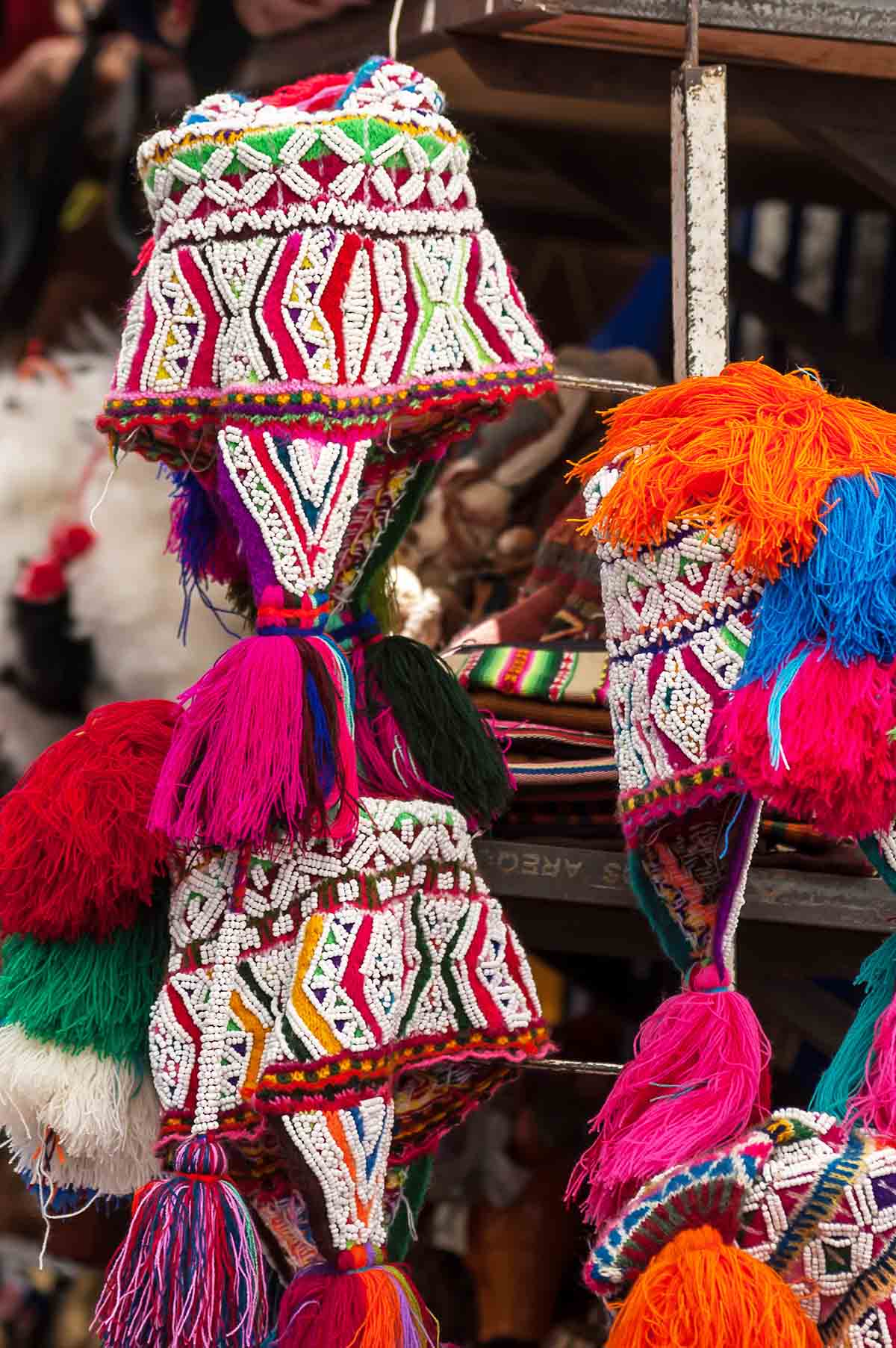
A traditional Peruvian chullo with brightly colored tassels and white beading. Image: Peru – Sacred Valley – Pisac Food and Souvenir Market ” by World Wide Gifts , used under CC BY-SA 2.0 / Compressed from the original.
What is a chullo ? A chullo is a style knit hat with earflaps that originates from the Peruvian Andes. Tie them under the chin for extra warmth. In fact, these Cusco souvenirs are practical when wandering chilly Cusco at night! Chullos come in many designs. There are traditional Peruvian designs , as well as pop culture cartoon characters. There are also intricately designed chullos decked out in colorful beads and tassels.
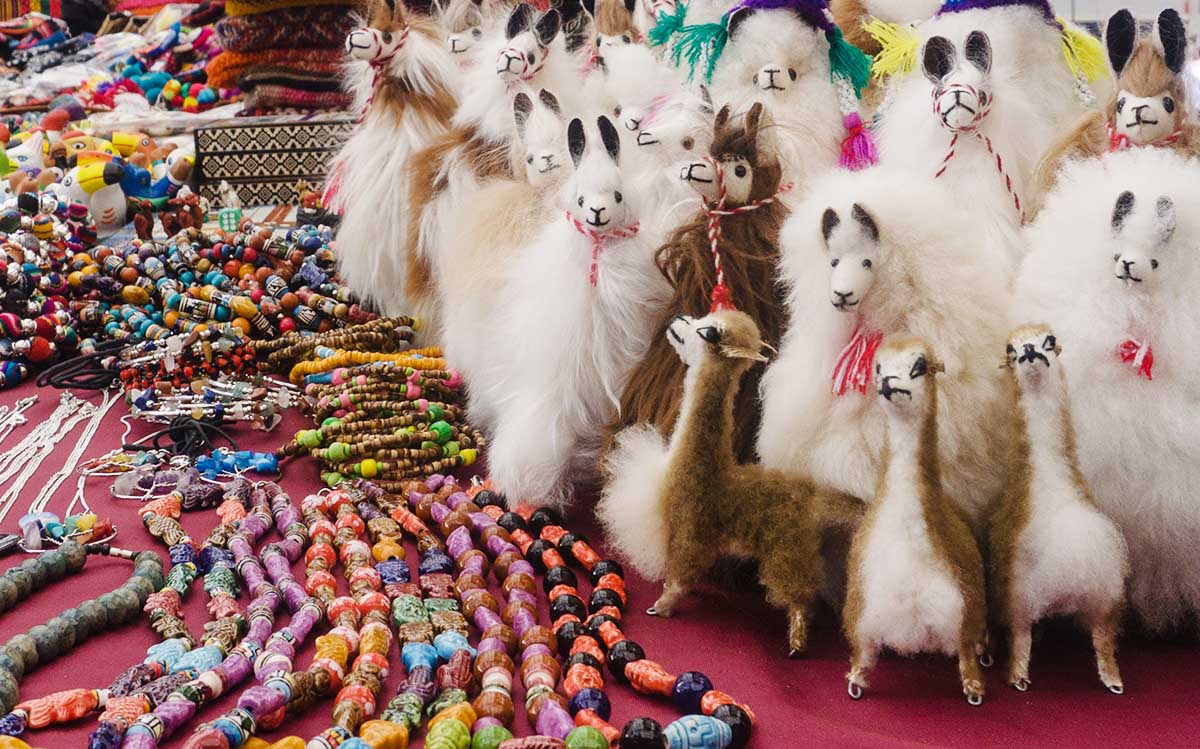
The fluffiest of llama dolls at a Peruvian souvenir market. Image: Souvenirs in Pisac market, Peru 2019-10-15-4 ” by Alexey Komarov , used under CC BY-SA 4.0 / Adjusted brightness, cropped and compressed from the original.
Llamas are ubiquitous in the Peruvian Andes. And why wouldn’t they be? This native camelid was an important pack animal for the Incas and an important source of wool. So why not bring one of these little guys home with you?
You’ll see a variety of Peruvian llama doll s while buying souvenirs . They can come with tons of decorations, like halters, colorful packs, and pom-poms. Or you can bring home an extra soft and fluffy llama doll. You can even bring home llama-topped pens for schoolchildren or colleagues from work. There are so many adorable llamas to choose from!
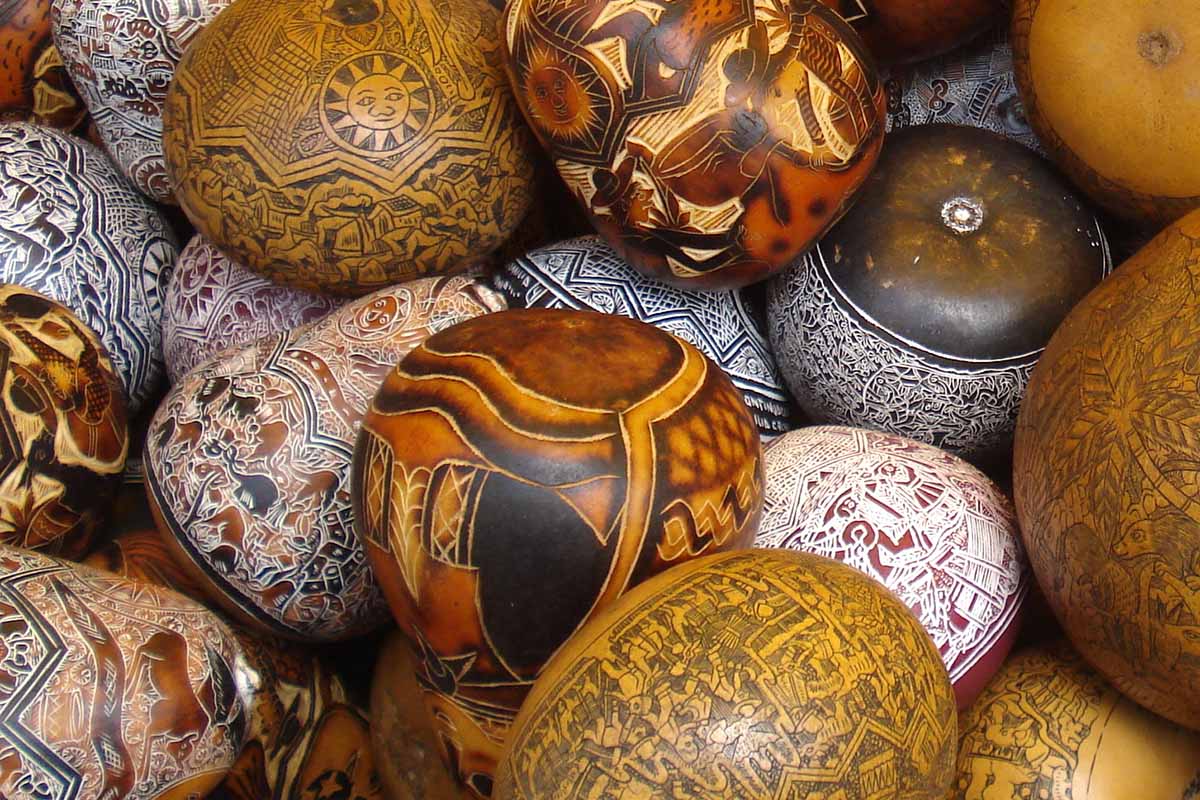
Intricate designs of Andean villages and native animals are hand-carved into dried gourds. Image: Mates Burilados / Carved Gourds ” by Miguel Vera Leon , used under CC BY 2.0 / Cropped and compressed from the original.
Mates burilados , or “carved gourds,” date back to many pre-Inca societies. In ancient times, mates burilados would’ve had ceremonial and practical purposes. The handicraft tradition lives on. But these days, they are more for decorative purposes.
Mates burilados are commonly made in Peru’s central and southern Andes mountains. But you can also find them in the country’s northern coasts. Hand-etched designs range from geometric to intricate scenes of farming and native animals. They make for excellent holiday decorations and keychains.
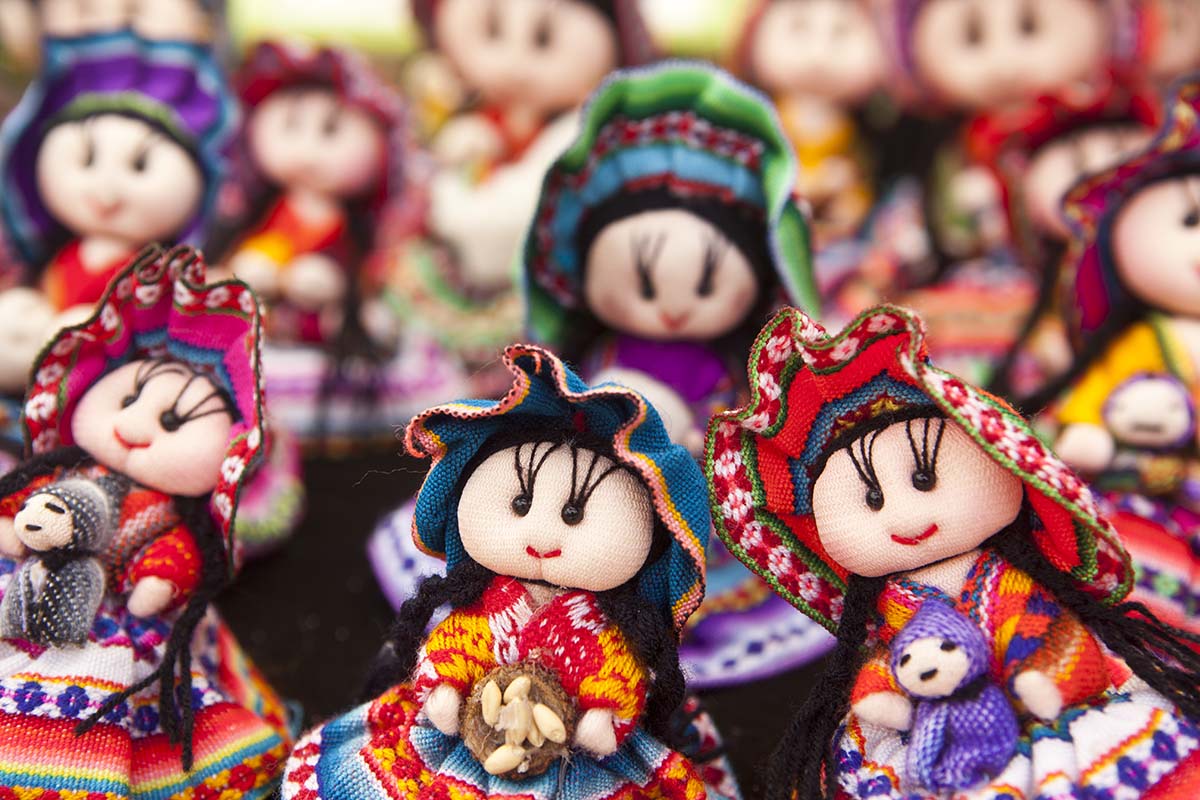
Andean dolls wear traditional woven skirts and shawls. They even wear their hair in long braids like women in the region. Photo by Ana Castañeda for Peru for Less.
Dolls are an old tradition found worldwide. In Peru, archeologists discovered ancient dolls from the Chancay culture. The Chancay thrived on the Peruvian coast from 1000 to 1400 CE. Chancay dolls have long, rectangular, legless bodies made of woven vegetable fibers. Embroidery gave them simple facial features.
Today’s Peruvian dolls, or rústicas, are similar to this ancient design but with an Andean twist. They wear traditional woven skirts, some with embroidery. The dress is just like many of the Andean women who make and sell them. They also sometimes come with hats and other accessories, depending on their size. Larger dolls may carry a basket or even a crocheted llama.
Ekeko is the god of prosperity and plenty according to the Tiwanaku religion. (The Tiwanaku people being from the present-day border between Peru and Bolivia). The modern Ekeko is usually a mustachioed man in traditional dress, often a poncho. And he is always loaded with bags and baskets. He can carry all sorts of things, such as grains and food, household goods, or even money. Basically whatever the owner of the Ekeko doll needs to be comfortable or prosperous. Ekeko dolls sometimes even come with a hole in his mouth to place a cigarette.
Ekeko dolls are great for those looking for something culturally significant and unique. For luck, be sure to put him in a place of honor in your home!
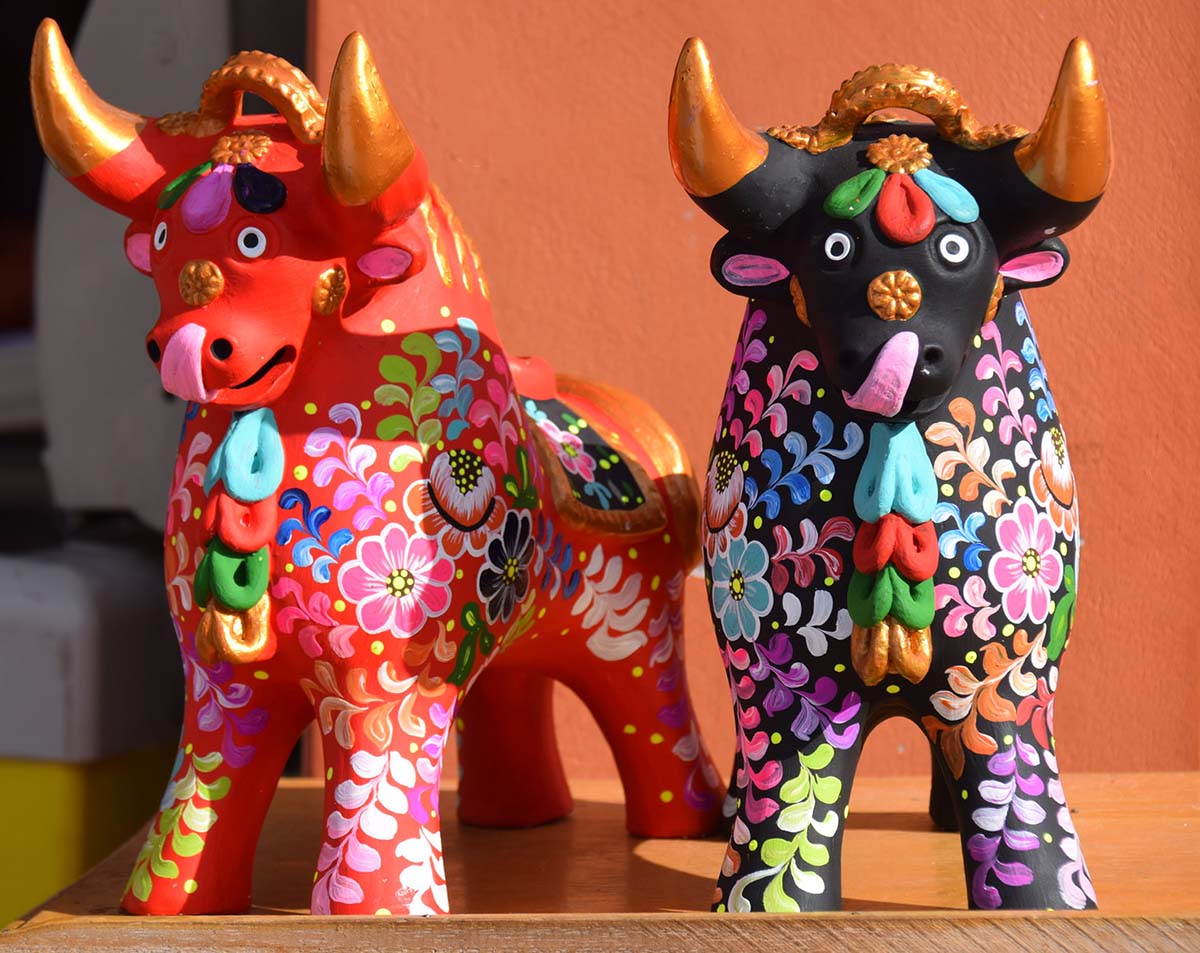
Hand-painted toritos de Pucará licking their noses will protect your home and bring good fortune! Image: Peru, Pucara. Toritos. ” by Rogerio Camboim SA , used under CC BY 2.0 / Cropped and compressed from the original.
The torito de Pucará is an intricately painted ceramic bull figurine that originates from the Puno region of Peru. There they are often used in various ceremonies and rituals. These figurines are believed to bring prosperous harvests, procreation of livestock, and happiness in marriage. Throughout much of the Andes, you can see a pair of bull figurines cemented on rooftops alongside a cross. Locals also believe that the bulls will protect the household and bring good luck.
The Shipibo-Conibo is an ethnic group that lives in the Peruvian Amazon. They are well-known for their beadwork and textiles. They are also especially known for their pottery. In fact, the maze-like Shipibo design kené is famous among native Peruvian designs . Many markets in Peru, not only the Amazon, carry items with the Shipibo design.
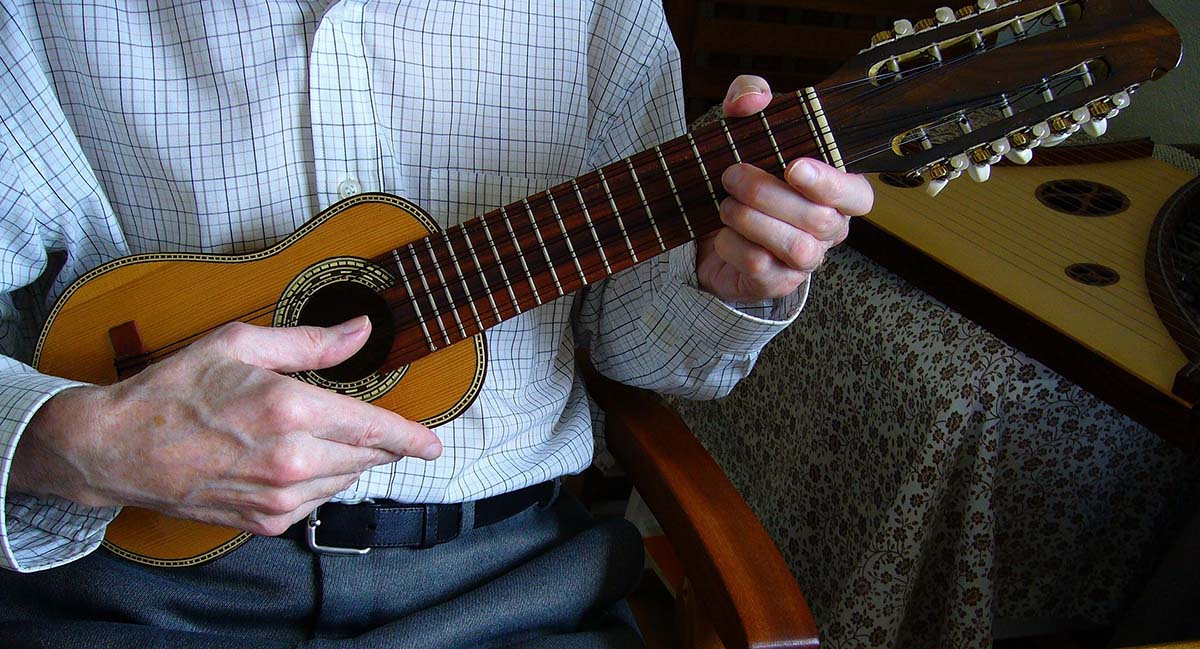
A man plays the charango, a traditional Peruvian instrument. Photo by Shirley810 on Pixabay , a public domain image database.
The charango is an Andean string instrument in the lute family. Its invention followed Spanish colonization when the conquistadors introduced their own string instruments. Historians believed that the Quechua and Aymara people of Peru first invented the charango. However, it soon spread to other parts of South America, including Ecuador, Chile, and Brazil. Charangos were traditionally made using armadillo shells, but are now constructed from wood. You will mostly hear them in traditional Andean music . But, the charango has an increasing presence in other Latin American genres.
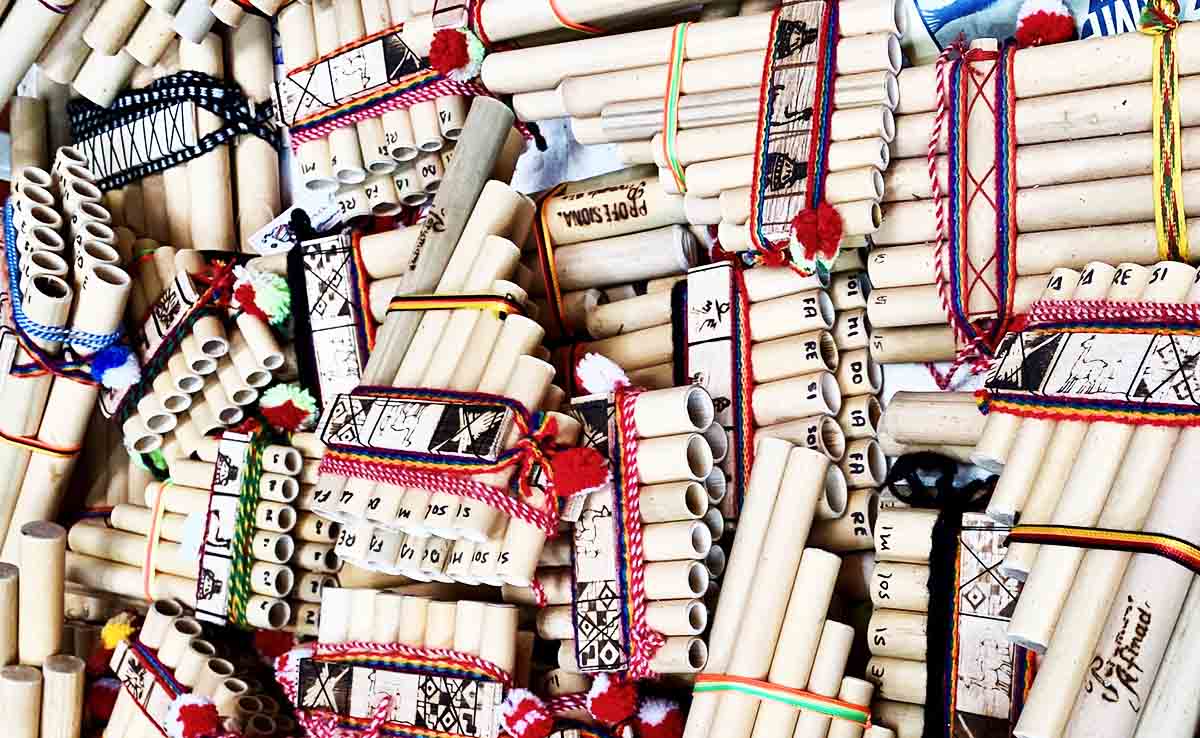
The panpipe, or siku, is a key instrument in Andean music. Image: Parador Pukaras Mercado ” by F Delventhal , used under CC BY 2.0 / Cropped and compressed from the original.
A siku, or a zampoña, is a traditional Andean panpipe. Sikus originated with the Aymara culture around Lake Titicaca. While they can be made with various materials, today they are most commonly crafted from bamboo. different communities. But, markets typically carry a more standardized size of siku.
Jewelry is always a personal gift as you have to know the receiver’s style and preferences well. For those special people in your life back home, why not pick out some unique jewelry from Peru ? There’s a large variety of necklaces, rings, and earrings to choose from.
In fact, one of Peru’s largest industries is mining. Although it produces mostly copper, Peru also has a decent amount of gold and silver. This makes Peruvian gold jewelry , as well as silver, quite special. Keep in mind, though, that Peru is still developing. Precious metals are sometimes mined illegally and/or in environmentally unfriendly ways. So be sure to check that the origin of your piece is ethical!
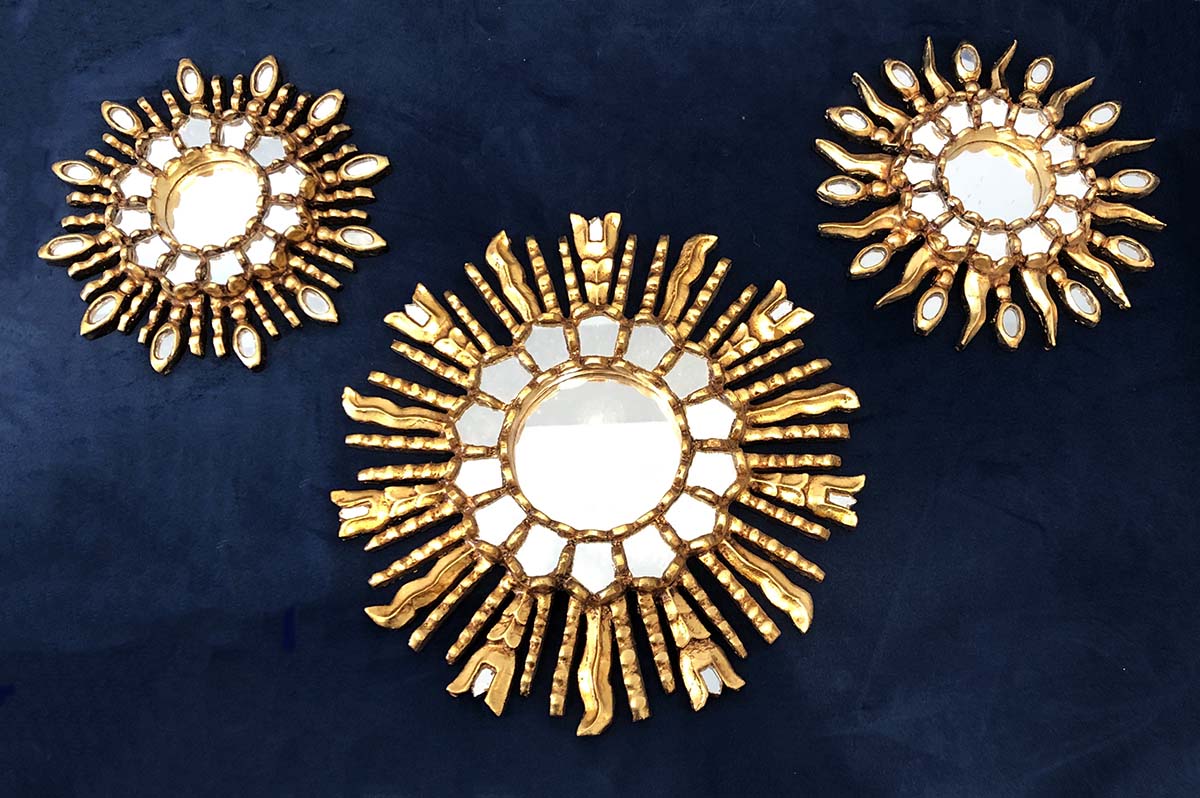
An Inca sun design of Peruvian mirror. Photo by Adriana Proaño for Peru For Less.
Mirrors were first used as an evangelization tactic by the Spanish on the native peoples. In fact, native Peruvians had never seen a mirror until then. It was a way to explain the Christian God and beliefs by saying that the mirror’s reflection was of their soul.
There have been many Peruvian mirror designs that developed afterward. All of them are unique to the country. You will find golden radial designs often used to decorate saints, much like an aureola. The same design also evokes ancient Inca sun symbols. Or opt for mirrors with traditional Andean and traditional geometric designs.
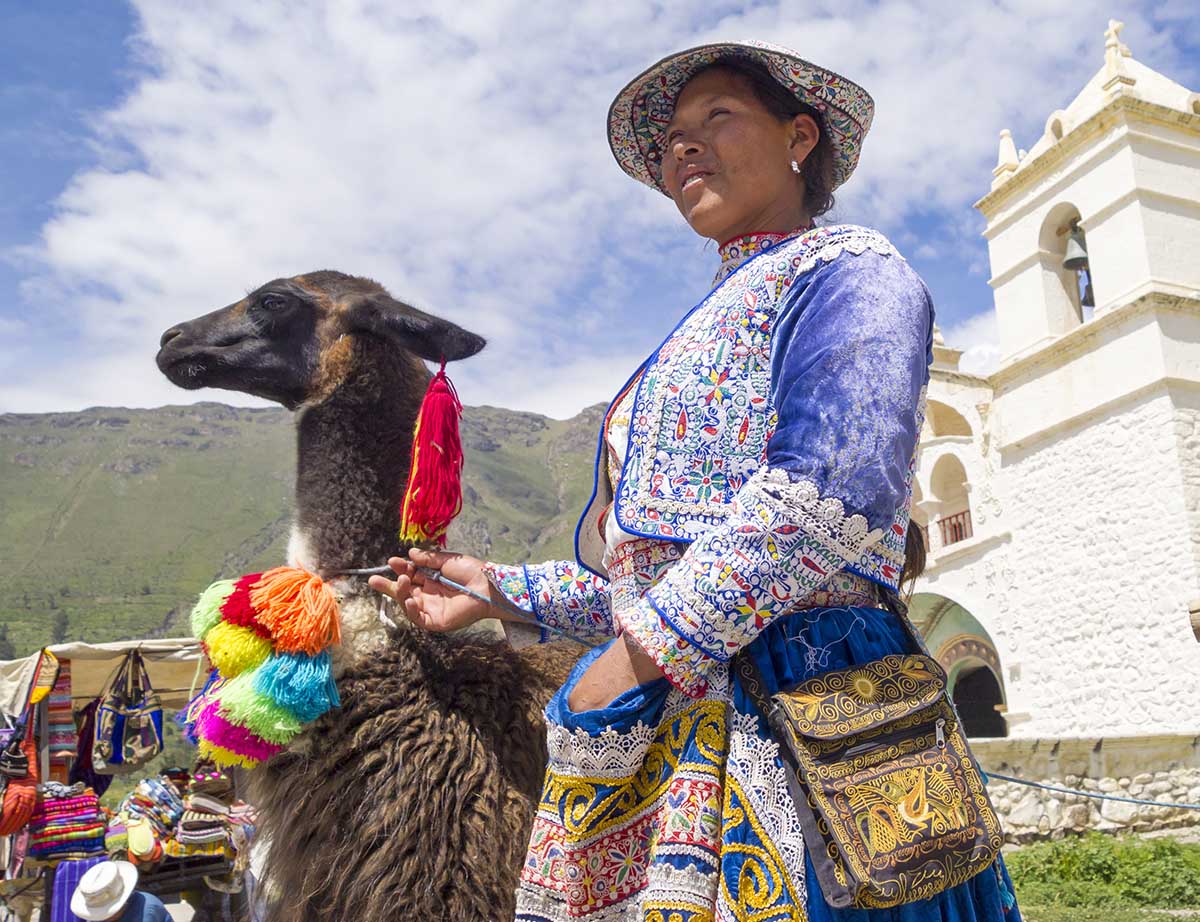
A llama elegantly models brightly colored pompoms around its neck.
Peru has an abundance of colorful llama and alpaca wool products. Pompoms of naturally dyed yarn adorn chullos and the ever so photogenic llamas in Cusco! A Peruvian wall hanging of multiple strings of colorful pompoms is a great way to add a pop of color to your home decor. You can find them in just about every sort of color combination. There are bright blues and pinks, soft pastel green, and even muted shades of brown and beige. For some, a full wall hanging is a bit too much for their home sweet home. In that case, there are also pompom keychains and small doorknob hangings.
Huayruro are small red and black seeds that come from the Huayruro tree, or Ormosia coccinea . It is native to the Amazon rainforest. The seeds come from the pods located high on top of the tree, sometimes as high as 100 ft (30 m)! They have featured in jewelry since pre-Inca times. You’ll still find them in bracelets, necklaces, and keychains. You can also keep them in little glass jars. It is believed that the seeds bring good luck and ward off negative energy.

Coca candies are ubiquitous in shops and stands in Cusco. Image: COCA Candy ” by randomised.org , used under CC BY 2.0 / Cropped and compressed for the original.
Almost immediately upon landing in Cusco, you will see coca leaf products everywhere. The coca leaf is a popular natural remedy for altitude sickness . Locals will chew the ubiquitous leaf for energy. But many visitors probably won’t consider buying coca leaves . But, you can easily bring home little coca candies, the most popular of Peruvian candies .
Other Peruvian sweets include chicha morada candy (flavored after the common purple corn drink), alfajores (cornstarch based cookie sandwich with a caramel cream), and besos de moza (chocolate-covered marshmallows).
In any Peruvian market, you will find a stall stuffed with all sorts of colorful paintings. You will find detailed religious paintings of the Virgin Mary and local saints. There are incredibly simple but lovely scenes of Andean women and landscapes. You will also see more abstract and brightly colored animal motifs. No matter your home decor, there is sure to be a painting to suit your esthetic.
Woven baskets have been of cultural importance in many cultures throughout the world. Peru is no exception. Coastal communities have been weaving baskets for centuries using local plants and techniques. They often have utilitarian designs for carrying produce or as artisanal shrimp traps. In Lima, you can find useful but more decorative designs with stripes of reeds dyed bright colors. Choose between large open baskets or small ones with tops. The pop of color suits any picnic!
These amazing Peruvian souvenirs are sure to recall wonderful memories of your trip. Or they will kindle warm feelings of love as Peruvian gifts for friends and family. As you can see, each item has a special meaning and involves a wonderful history of craftsmanship. Bring home a little tradition and culture now that you know exactly what to buy in Peru !



Email: [email protected]
Sign up to receive our newsletter for great articles, stunning photos, and special deals.